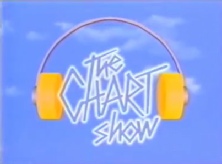
TV Pop Diaries
Pop Music on British Television 1955 -
A weekly hour-
Promo clips made to accompany a new single release date back to the days of The Beatles, who decided that they couldn't (or wouldn't) necessarily appear on all the UK's pop TV shows like Top Of The Pops, Ready Steady Go and Thank Your Lucky Stars, so they just sent in a clip instead. Promo clips could also be sent oversees to TV stations, providing free promotion for an act that probably wouldn't be sent abroad due to cost, while Queen's 1975 promo clip for Bohemian Rhapsody had been made quickly and cheaply to cover the fact that the band would be on tour when the single was out, so instead, it would do the promotion for them. In Britain promo clips would be shown weekly on Top Of The Pops, occasionally on The Old Grey Whistle Test and then later in kids' shows like Swap Shop, Get It Together and Tiswas. Promo clips became a regular feature on TV in the UK, but it wouldn't be an industry, not yet anyway.
In August 1981 MTV debuted and finally America had its own promo clips outlet. Previously Mike Nesmith's 'Pop Clips' gave promos a much needed airing in the US, but that was about it. While in the UK the New Romantic era was well underway with all the major acts having flamboyant promos made showing off their new make up and clothes which of course would completely change by the next single release. Adam Ant became the Promo King with his extravert and highly polished promos featuring guest stars like Diana Dors. New 'videos' became an event, in some cases more so than the record it was promoting. Although it was eventually launched in the UK MTV wasn't really needed as the weekly outlet for clips was so large anyway, beside cable TV never really took off in the UK and when satellite TV overtook cable later in the decade the Golden Age of promos/videos was already over.
The early days of Channel 4 demanded cheap (or cheapish) TV ideas and the idea of
an hour's worth of promo clips seemed a no-
The show wouldn't have lasted if just current chart hits were aired, so probably
using Britain's weekly music paper charts as a guide they would show indie, goth,
metal, soul, rap, stuff that wouldn't necessarily make it to The Pops or Saturday
morning TV. Exposure to these other genres made the show a must-
In addition the show would use what they called 'HUD', a grid or frame over the clip which gave information about the artists, although the info was so tightly packed it was difficult to read sometimes. The show reflected the use of home video recorders and used a pause button display before a commercial break, and 'play' to resume afterwards.
Unfortunately for the producers, the show was launched at the wrong time. On the 31st May 1986 the British Phonographic Industry's (BPI) agreement with broadcasters over the payment of use of music in promo clips ended, badly affecting shows which rely on the use of such clips like The Chart Show.
From Music Week 7th June 1986 -
From Music Week 21st June 1986 -
On 20th June 1986 the series is abandoned due to the dispute over soundtrack payments. The show was blacked by the Musician's Union. The show's producer Keith MacMillan pointed out "I have to ask who's losing this battle? The M.U. have lost payments for members this week, and the record companies have lost sales tomorrow. Is it worth the struggle?" It is replaced with Rewind, a show of clips from the Channel 4 archive, produced by The Chart's Show's Video Visuals.
From Music Week 28th June 1986 -
On the 8th August 1986 the show is reinstated following an agreement between the
show's producers and the BPI. From Music Week 23rd August 1986 -
The show continues with the usual round-
The 9th September 1988 sees the show's hundredth edition, but the decision is made
to leave Channel 4 and make a move to ITV. The final Channel 4 edition being a two-
2nd September 1989 sees a name change to The ITV Chart Show and it would continue
on Saturday mornings through the mid-
The show was elbowed out and replaced by Top Of The Pops lookalike CD:UK which preferred to use performers live in the studio. The show lived on in the satellite age with The Chart Show getting its own channel.
The show had a remarkable thirteen year run and introduced the work of so many inventive and innovative video makers, but the industry was pricing itself out of existence and had all but gone by the turn of the millennium.
THE CHART SHOW / THE ITV CHART SHOW
C4 & ITV / Video Visuals
Channel 4 11th April 1986 -
ITV 7th January 1989 -
